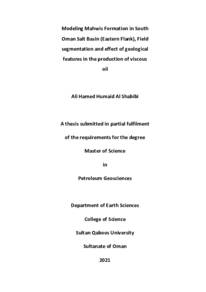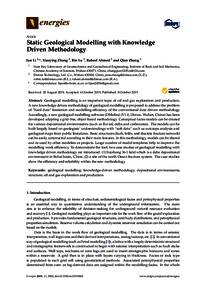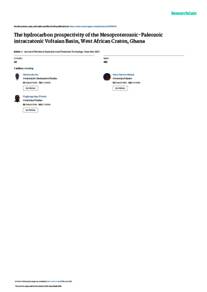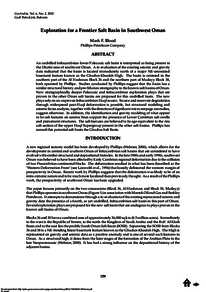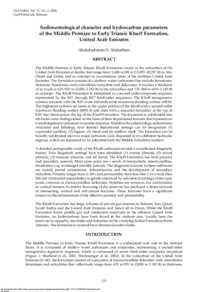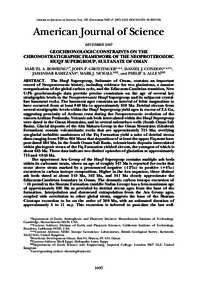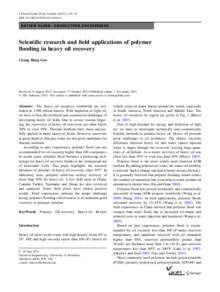Document
Modeling Mahwis formation in South Oman Salt Basin (Eastern Flank), field segmentation and effect of geological features in the production of viscous.
Other titles
نمذجة تكوين الماهويس في حوض ملح جنوب عمان (الجناح الشرقي)، تجزئة الحقل وـاثير الصفات الجيولوجية في انتاج الزيت اللزج
Publisher
Sultan Qaboos University.
Gregorian
2021
Language
English
English abstract
Mahwis Formation is a significant Middle Cambrian clastic reservoir in South
Oman Salt Basin. This study documents a sedimentological, petrographical, and
reservoir quality evaluation of the well data in X-Field, South Oman, to determine
the depositional setting, reservoir quality characteristics and construct a 3D
model of the Cambrian Mahwis Formation. The Thirty-three wells drilled in X Field, core data, and a 3D seismic profiles were used as the data set of the study.
The cored Mahwis Formation comprises fluvial sandstones with subordinate
mud clast-dominated conglomerates, deposited in weakly channelized,
transitional channelized/sheet flood, and fluvial sheet flood environments.
Interpretation of un-cored succession is limited to a three subdivision that
includes clean sandstone, hetrolith sandstone, non-reservoir (lacustrine shale or
cemented tight rock).
Previous work on the Mahwis Formation indicates that this formation
represents a high net:gross interval that contains a number of laterally
correlatable, relatively clean sandstone intervals. Meanwhile, the well X-18H1
sandstones contain few baffles to vertical/horizontal flow. However, intensely
cemented horizons have the potential to locally reduce vertical permeability.
The Grain size appears to be the principal control on reservoir potential,
permeability typically increasing with increasing grain size. There is also a
positive trend between grain size and secondary porosity, suggesting that
porosity has been enhanced by feldspar dissolution in the coarser-grained
sandstones. Kaolinite and illite are the major clay minerals formed by the
decomposition of feldspar. Minor dolomite and calcite cement cause localized
degradation of porosity and permeability.
The reservoir hydrocarbon performance is controlled by reservoir quality,
reservoir architecture, fluid properties, etc. The Mahwis reservoir is good to
excellent reservoir in terms of rock properties, the pay interval consists of good
porosity and permeability. The low recovery factor of Mahwis is controlled
mainly by oil viscosity. The viscous oil with the presence of lateral baffles led to
quick watering of wells and meanwhile reducing overall X-Field recovery factor.
The presence of viscous oil within good reservoir quality reservoir with low
reservoir pressure is a good candidate for enhanced oil recovery (EOR) by steam
flood.
Member of
Resource URL
Arabic abstract
تشكل الماهويس خزاناً صخرياً هاماً في وسط الكمبري في الحوض الملحي جنوب عمان. توثق هذه الدراسة تقييم جودة الترسبات والبتروغرافيا والمكمن لبيانات الآبار في حقل X جنوب عمان، لتحديد الإعداد الترسيبي وخصائص جودة الخزان وبناء نموذج ثلاثي الأبعاد لتكوين ماهويس الكمبري.
تم استخدام الآبار الثلاثة والثلاثين التي تمحفرها في حق X والبيانات الأساسية والزلزالية ثلاثية الأبعاد كمجموعة بيانات للدراسة.
تم استخدام الآبار الثلاثة والثلاثين التي تمحفرها في حق X والبيانات الأساسية والزلزالية ثلاثية الأبعاد كمجموعة بيانات للدراسة.
Category
Theses and Dissertations

